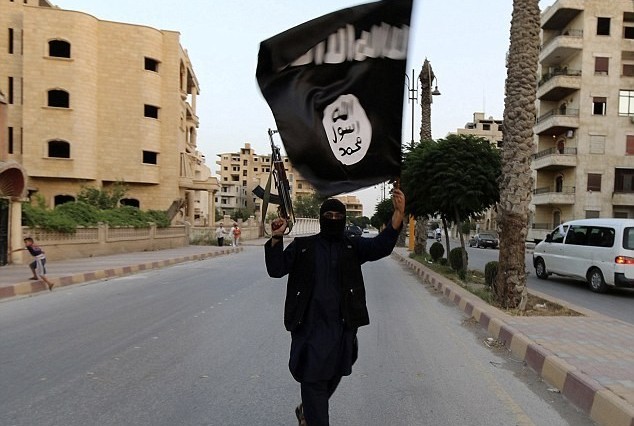by Anna Cizek
In the first decade of the 21st century, al-Qaeda faced a deteriorating support base because of its role in the deaths of many innocent Muslims. As a result, Ayman Mohammed Rabie al-Zawahiri (now al-Qaeda’s leader) directed the group’s media arm, As-Sahab, to publish a variety of rationales for previous aggressions. According to al-Zawahiri’s analysis, climate change would “make the world more sympathetic to and understanding of the Muslims’ jihad against the aggressor America.”
Although it is a stretch to presume that the general public would empathize with al-Qaeda due to environmental issues, the terrorist organization’s leadership was correct that climate change strengthens the case for jihad by its North African wing, al-Qaeda in the Islamic Maghreb (AQIM). Time and time again, academics, policymakers and military strategists have failed to comprehensively address the extent to which environmental change exacerbates immediate extremist threats. This climate-conflict relationship, underscored by the 2007 Intergovernmental Panel on Climate Change, the United Nations Environment Program, and the trajectory of the Darfur conflict, requires shifts in governments’ security practices.
In the case of northern Mali, the following conditions have most influenced AQIM’s success: Mali’s classification as a broken state, its geographical location and geopolitical marginalization, the corruption of the government, and Western influence. Environmental change exacerbates all of these conditions.
Mali’s ranking of 175 on the 2016 human development index report confirms its classification as a broken state. Along with many other countries in Africa, Mali has experienced poor progress since its independence. It has experienced three coups, a military dictatorship, an abortive merger with neighboring Senegal, and a failed attempt at socialism. As a result, the state is weak and unable to cater to the needs of large segments of the Malian population. Over time, collective inaction has left Malians feeling ignored and insecure. AQIM has exploited these vulnerabilities to its advantage.
AQIM uses government ineptness to show that it can offer what the Malian government cannot, namely resources and the opportunity of income generation. The projected depletion of fisheries and safe drinking water as a result of environmental change will leave civilians desperate. Mali’s history of failed adaptation suggests that the country will be even less able to provide for its citizens in this time of desperation, which will leave the citizens and the state at a greater risk of exploitation by extremists.
Environmental change not only enables AQIM to capitalize on the ineptness of a broken state. It also exacerbates geophysical conditions in the region. Mali’s physical environment, which includes the Sahel and the Sahara, gives AQIM a strategic advantage. For example, a peacekeeper officer stated that one of the great challenges for counterterrorism missions is not having adequate medical resources for the soldiers to fight in the environment of the country. In order to navigate the long and treacherous route to reach destinations where terrorists harbor, peacekeepers require costly resources. Moreover, this lack of accessibility allows AQIM to govern areas where there is otherwise no governance at all. Environmental change will increase desertification and make these areas even more difficult for authorities to reach—indirectly strengthening AQIM’s role in the region.
Mali’s physical geography results in the government’s inability to distribute social services to its whole territory, particularly in times of crisis. However, the ability to distribute needed resources is a secondary problem when the intent does not exist. Environmental change heightens corruption in Mali. For example, after major droughts in the 1970s and 1980s, the Malian government received relief aid to help adversely affected communities. Despite the good intentions of the international agencies, the financial resources never actually reached the people who needed it most. Much of the money went to fund the construction of “drought castles” for wealthy elites. As a result of this embezzlement, desperate Nomadic Tuareg populations, who were no longer able to farm, migrated to Algeria in search of methods of generating income. It was in Algeria that many Tuaregs were radicalized and returned to Mali to join the fight of extremists such as AQIM. Although the droughts did not directly lead to the spread of extremism, they perpetuated conditions that encouraged Malians to revolt against their government and join extremist movements.
During the 1970s and 1980s, “global warming” was often understood as a peripheral phenomenon for environmental ministries to tackle. As more data emerged, global warming went from being an environmental issue to an energy and economic issue, and then finally a peace and security issue. Climate change threatens resource allocation, coastal populations, and water and food security. These conditions contribute to a positive feedback loop that amplifies AQIM’s success.
The Security Council has acknowledged that environmental degradation and climate change are greatly aggravating the security crisis in Mali. Unfortunately, aside from occasional recognition by the United Nations, the relationship between AQIM and environmental distress has gone largely unnoticed. Those concerned about the growth of AQIM should pay more attention to the environment—and environmental crisis—that makes it possible.
Anna Cizek is an intern at the National Council on US-Arab Relations (NCUSAR). The views and opinions expressed in this article are those of the authors and do not necessarily reflect the official position of NCUSAR. Photo: AQIM (Wikimedia Commons)





